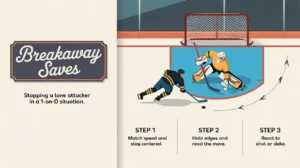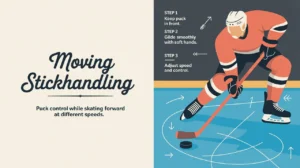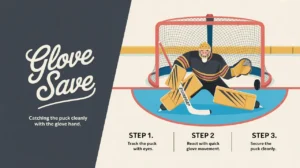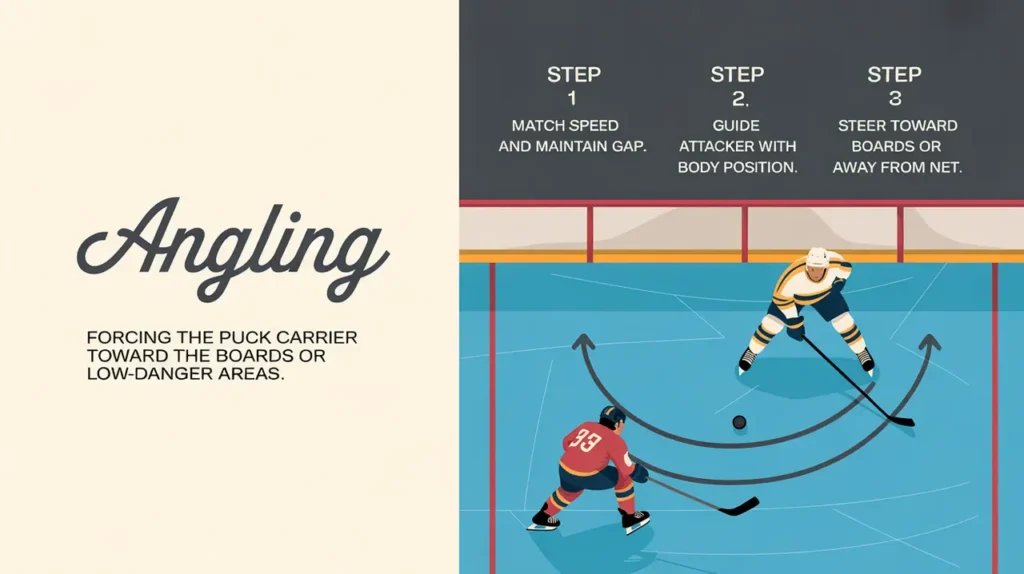Jim’s Intro to Gap Control
Hi folks, Jim here, the only commentator who once explained, “Gap control is really important to me. That’s why I wear a mouthguard while broadcasting. Look, pucks fly so fast in this game. You just never see them coming. I plan to keep all my teeth.”
What is gap control?
Gap control is the defensive skill of maintaining the optimal distance between you and the puck carrier, allowing you to challenge effectively without getting burned. A good gap neutralizes time and space, forcing attackers into bad decisions.
How does it work?
Gap control depends on skating, positioning, and anticipation:
- Set the Gap Early: Establish your distance as the rush develops, usually within one to two stick lengths.
- Match Speed: Skate backward smoothly to mirror the attacker’s pace without retreating too quickly.
- Stick Positioning: Keep your stick extended in the lane to limit passing and shooting options.
- Body Position: Stay square to the attacker and maintain inside positioning.
- Adjust Dynamically: Tighten the gap as the play approaches your zone to take away options.
- Transition Timing: Pivot and close at the right moment to pressure or break up the play.
How do you make good decisions with it?
- Read the Rush: Assess how fast and wide the attacker is coming to decide how aggressive to be.
- Avoid Giving Too Much Space: A wide gap invites the puck carrier to dictate the play.
- Don’t Overcommit: Closing too aggressively too early can lead to getting deked or burned wide.
- Combine with Angling: Good gap control naturally funnels players into less dangerous lanes.
- Communicate with Teammates: Coordinated gaps among defenders keep the structure tight.
How do you master it?
Mastering gap control takes repetition in live rush scenarios. Players work on skating backward at different speeds, pivoting efficiently, and reading puck carriers. Video review helps defenders recognize when their gap was too big or too tight.
What does it look like when done right?
Good gap control looks smooth and calculated. The defender glides backward in sync with the attacker, keeps their stick active, and shuts down options until they can step in and take the puck away cleanly.
Commentator’s Corner
Jim’s Take
A perfect gap is like walking a tightrope. Lean too far one way, you fall. Lean too far the other, you give up a breakaway.
Parent Tip
Encourage players to focus on skating and spatial awareness. Great gap control starts with great edges and confidence.
Player Tip
Keep your feet moving, stay square, and let the gap shrink naturally as the attacker approaches. Timing beats panic.
A Final Thought
Gap control is quiet brilliance on defense. Master it, and you’ll dictate the play, frustrate attackers, and turn dangerous rushes into routine stops.









